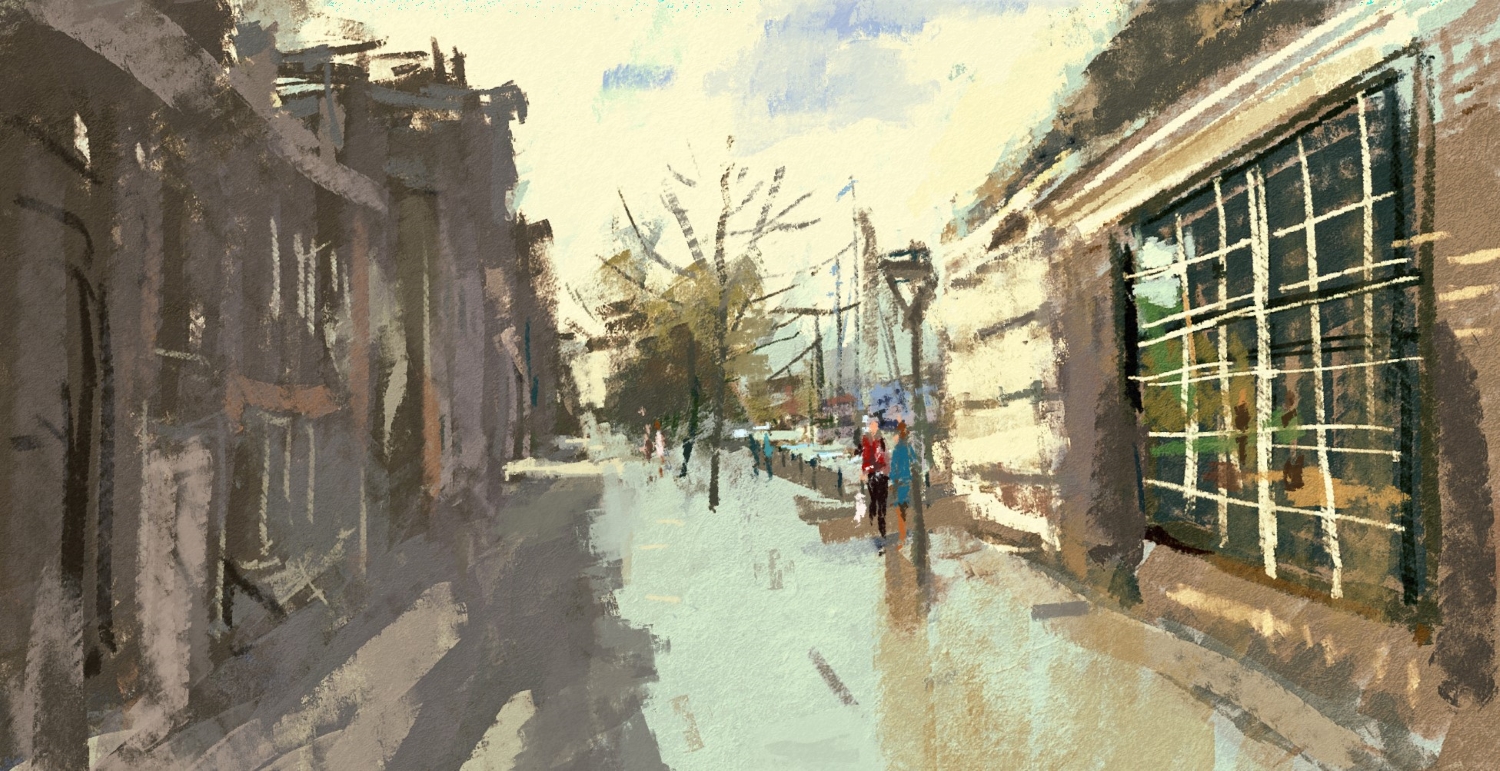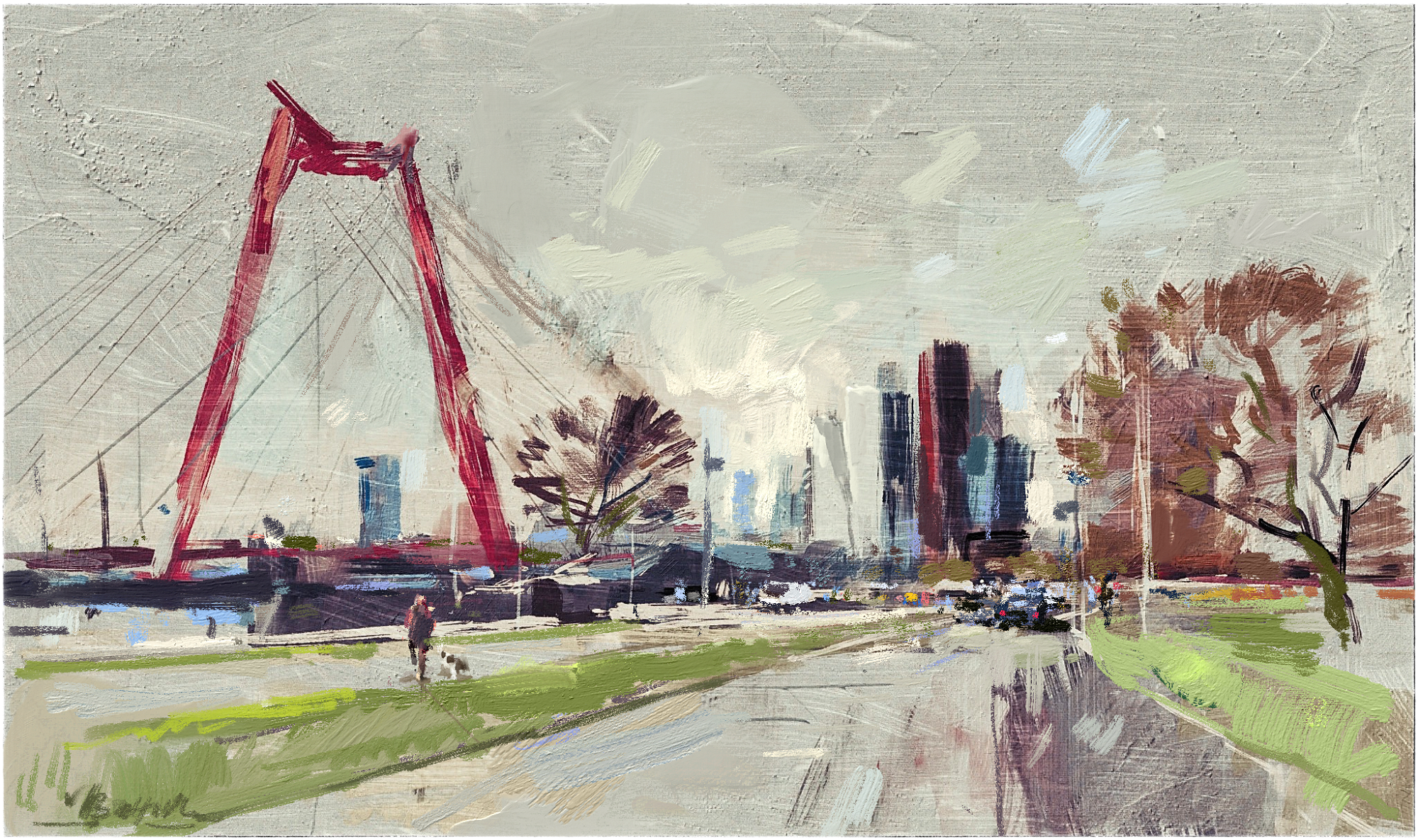We are thrilled to introduce Dutch painter Ad van Bokhoven. Growing up with a crayon in his hand and later graduating from the Royal Academy of Design and Arts in ’s-Hertogenbosch, Ad's art path was clear. He spent the last four decades painting landscapes and teaching essential painting skills to aspiring artists.

Ad van Bokhoven is a Dutch traditional and digital painter. Growing up in the small village of Drunen in south Holland, just a bicycle ride from where Vincent van Gogh once lived, he was drawn to art early on. After graduating from the Royal Academy of Design and Arts in
’s-Hertogenbosch in 1980, he dedicated his professional life to painting oil and pastel landscapes of beautiful views that surround him. Ad took a leap of faith and included new digital painting tools in his workflow in the 1980’s. His digital art keeps a very traditional look to this day.
Let's start from the beginning. Ad, you studied at the Royal Academy of Art and Design in s´Hertogenbosch. What led you to pursue art and how did your studies influence your artistic journey and style?
I always loved drawing. When I was five, my mother let me participate in a drawing contest. It was not a serious thing…but she sent in my coloring page and I won a box of coloring pencils! Wow, probably the start of my career.
In 1975 at the age of twenty, I decided to take it seriously and went to the Royal Academy of Design and Arts in ’s-Hertogenbosch Holland. The studies took five years and I loved it. I was trained traditionally, which means: model drawing, anatomy, landscape drawing, watercolor, etc. No digital arts; it simply wasn’t there! There were no computers at that time in art schools.
From the beginning, I had that feeling for tradition. Later in my career, I found my way also in modern arts. Dutch Coast
Dutch Coast
"I often choose landscapes that have nothing special in them. It is the artist that shows it."
Even though digital painting was just beginning, you started with it in 1996. What inspired this shift, and how has it impacted your artistic expression?
My eldest brother was a university professor of Mathematics and Electronics in Holland and he gifted me Painter software. It triggered me and after a while I mastered it. Later, they used my paintings for promotion and I got new versions for free to test. Since then, I split my time 50/50 focusing equally on traditional and digital painting. I still do so to this day.
I think that my traditional education gives me a head start. All those whizz-kids of today have a lack of that. They're not used to "thinking in paint".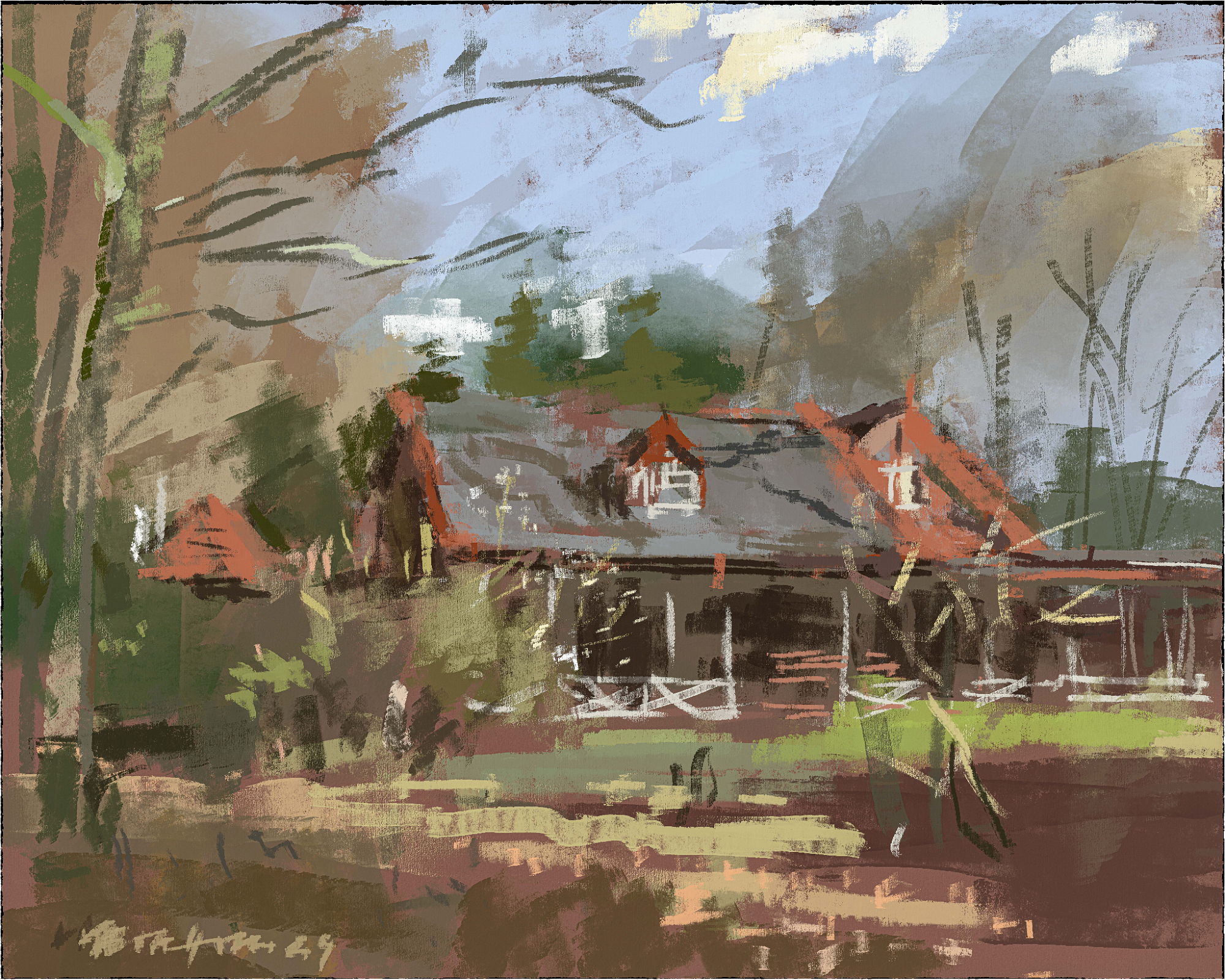 Red House
Red House
Your work is characterized by loose details, looking like it was painted alla prima on the sight. Could you describe your painting process in more detail?
I use photographs taken with my iPhone, mainly of the places where I live. At home, I paint them with Rebelle or Painter. I prefer Rebelle when working with pastel and Painter for oils.
In the past, I made lots of “alla prima” pastels on the site. On my bicycle with a box of pastels, looking at beautiful landscapes immediately transferring my views to the canvas. I worked very fast and often finished the paintings within an hour. Pastels are great for quick sketching and in the digital environment as well, especially in Rebelle!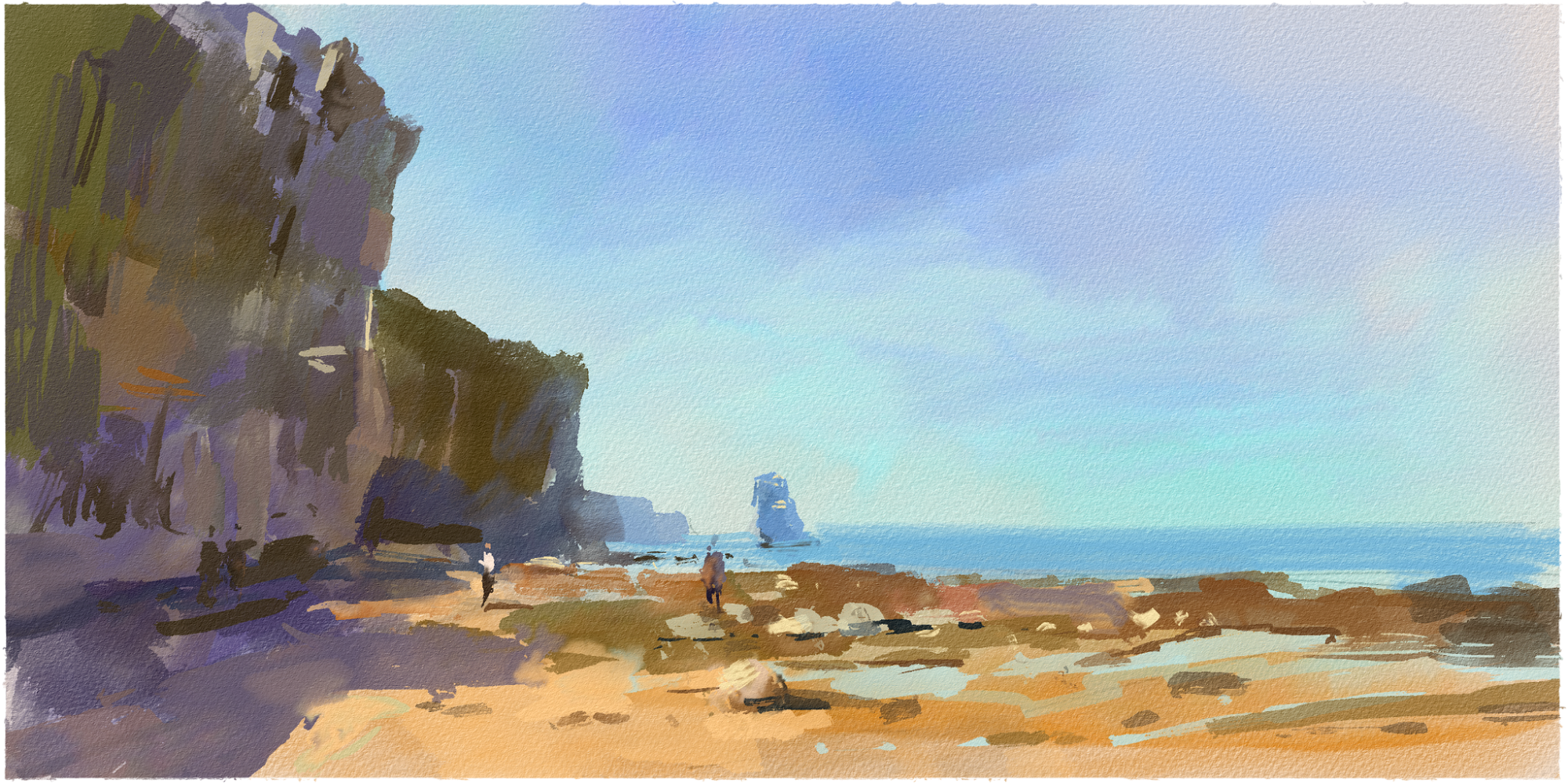 Étretat, France
Étretat, France
What themes or concepts do you often explore in your artwork, and why are they significant to you?
I think landscape painting is my main focus, although, I also make portraits and cityscapes. I like the different moods and light in landscapes. I visit some places every season again and again. It is always different and so am I!
I often choose landscapes that have nothing special in them. It is the artist that shows it. When working with pastels in Rebelle, the paper choice is most important. What color and texture shall I use? I love the banana paper (Exotic Rough paper set), very nice texture. Its color depends on the type of landscape I paint. Often, I change color afterward, it is easy to do in Rebelle!
I work very fast, usually in 10 minutes I see where it is going. I don’t like to add much detail. I keep my strokes big and blend certain places. I want to keep that freshness. Mistakes can be made in the first minutes, everything is possible. That is the nicest about sketching, it’s fresh, and it happens there. In the end, either I keep it or I throw it away, almost nothing in between. I’d rather make a new one than improve the failed artwork.
Below is an example of a quick landscape painting I completed in about 30 minutes. It is a simple, yet beautiful view. I used Rebelle pastels and my favorite banana paper texture.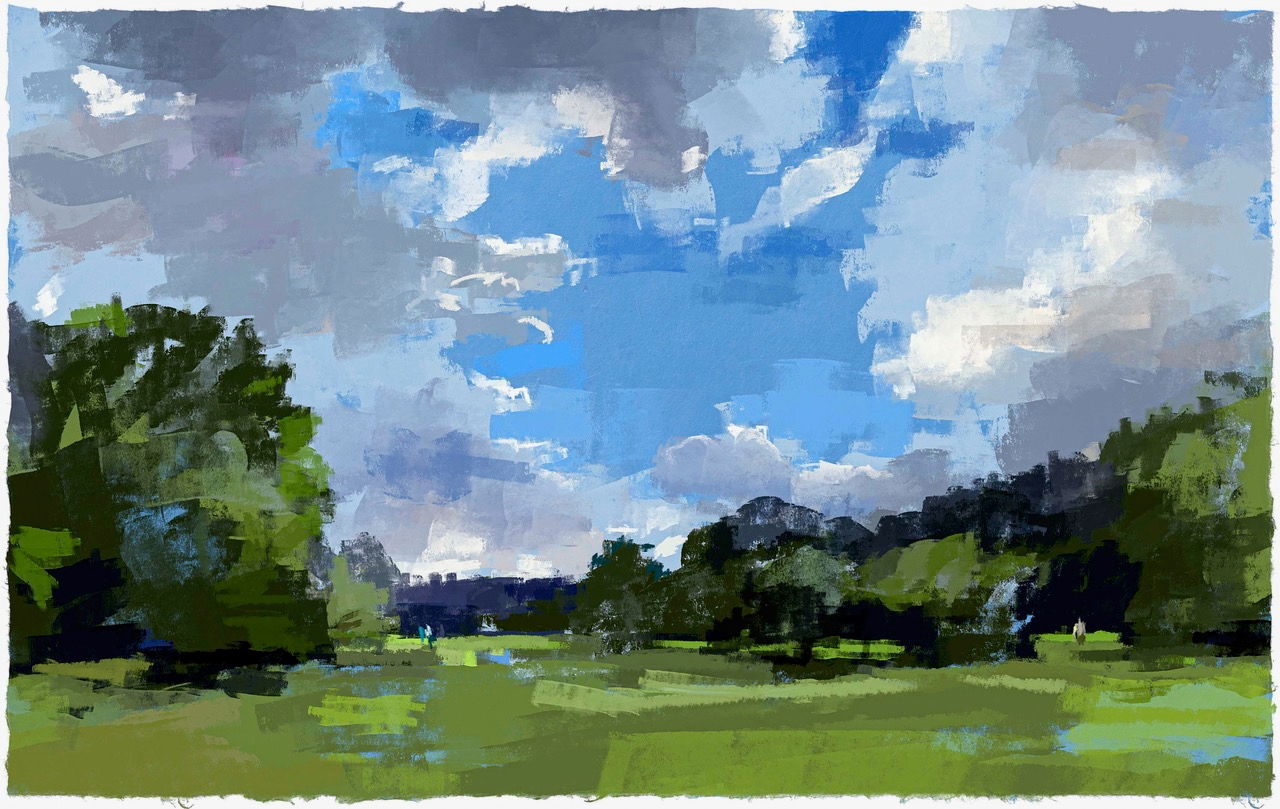 Dutch Sky
Dutch Sky
Some could describe your work as poetic. What emotions or messages do you aim to evoke in your audience through your art?
Poetic. Nature is poetic. And when I’m working in the field it is like I’m being whispered what to do!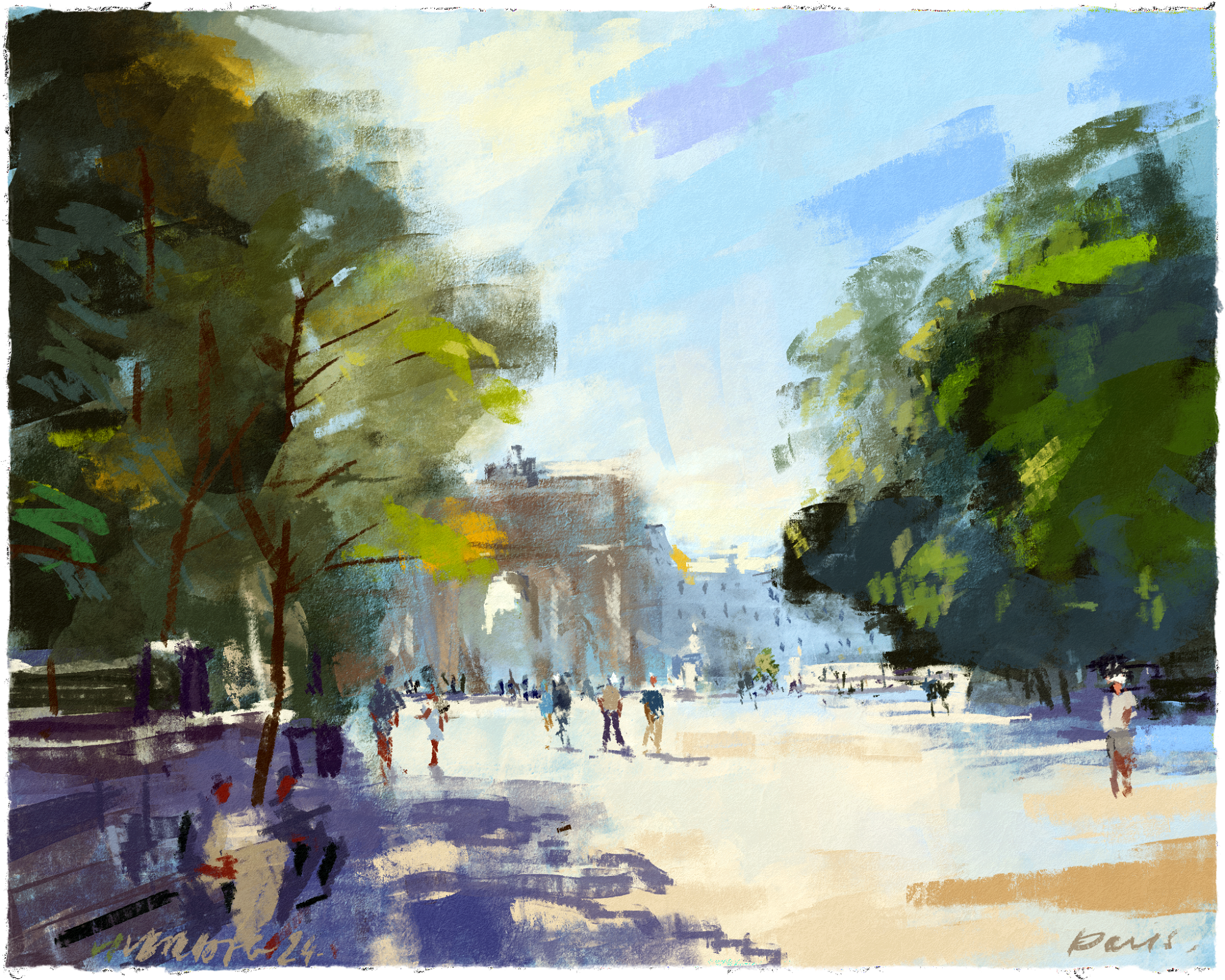 Paris, Louvre,Tuileriees
Paris, Louvre,Tuileriees
"I believe a little bit of traditional painting knowledge is deeply necessary! Without it, you can’t paint digitally."
Your digital work keeps a very traditional look. Is there something you are still missing in digital tools that you were used to working within the traditional environment?
Rebelle offers beautiful colored papers and crayons for working with pastels. But when it comes to oils, I still miss colored linen or Masonite-gesso underground. I like to use dirty canvases at the start, not clean white. Maybe I can make them myself?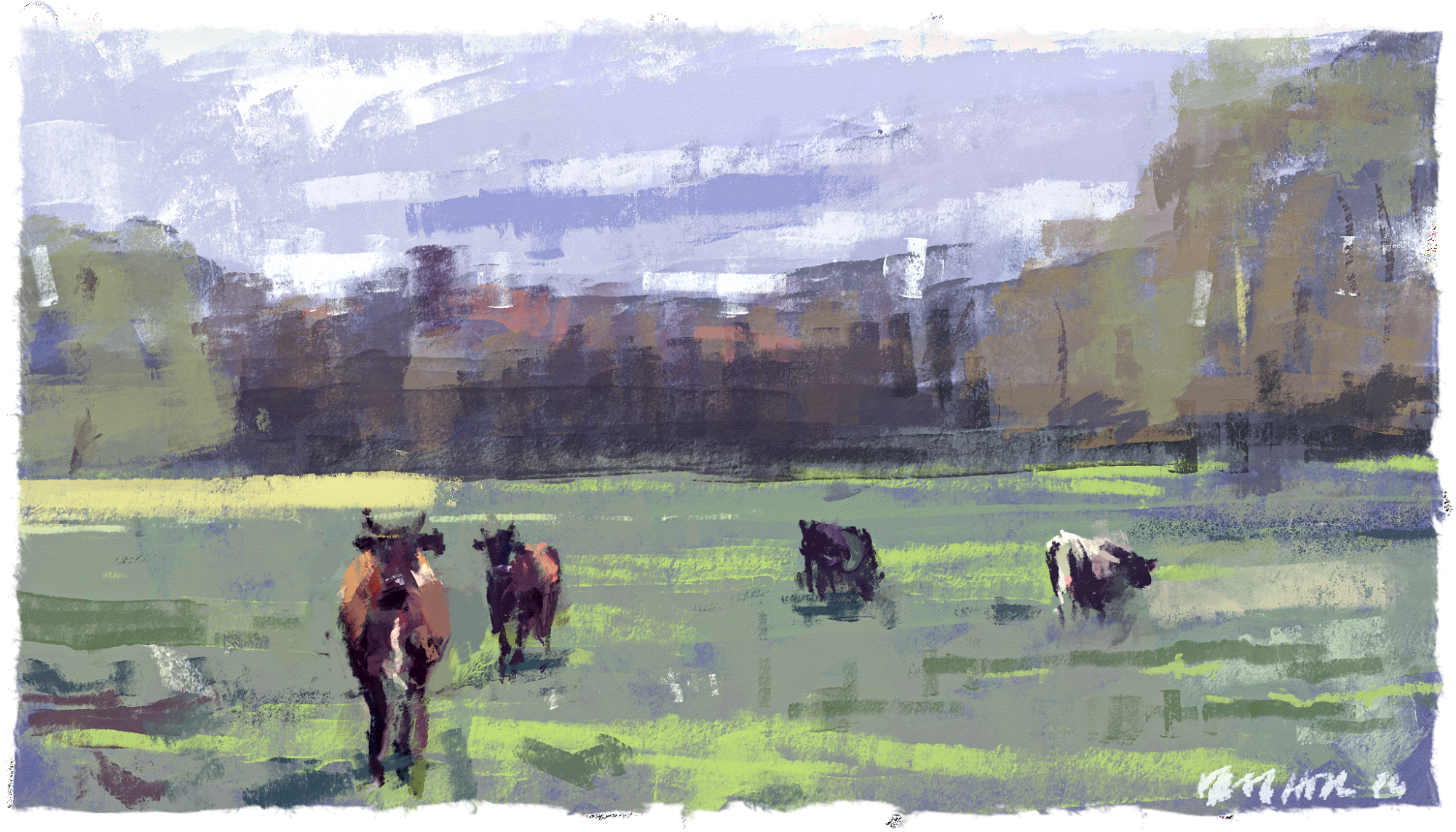 Springtime Cows in Holland
Springtime Cows in Holland
Your work is exhibited in your gallery where you also organize workshops. What is the main goal for you to teach your students? Do you encourage them to use digital tools even when they are just beginning with painting?
I believe a little bit of traditional painting knowledge is deeply necessary! Without it, you can’t paint digitally. I teach a bit of that, but I also encourage them to try digital painting tools.
In my workshops, I try to focus on elementary things, one of them being color theory. I showcase the pigments and explain how all paints with their specific binders are made. Then they know what they are working with.
The next step is explaining my brushes. My students can play with different horizons, compositions, and role-play situations. What happens if…
I am a strong believer in gouache when it comes to students. It is easy to dilute with water, doesn’t smell, dries fast, and it is not expensive. Gouache can be opaque and transparent, which makes it a great paint not only to begin with.
We often take our class to the beach where I show them a small painting myself. When I am busy painting, I think out loud and explain my thoughts, so they hear my thinking and notice my decisions. We finish the day with a group discussion evaluating everyone’s work.
Thank you, Ad, for opening your studio and showing us your work and art journey. We are excited to see your next painting in our Community Gallery, where you have been building your portfolio. Best of luck to you and your students on the art journey ahead of you.
Stay Creative,
Escape Motions Team
---
Learn more about Ad van Bokhoven: galerievanbokhoven.nl

